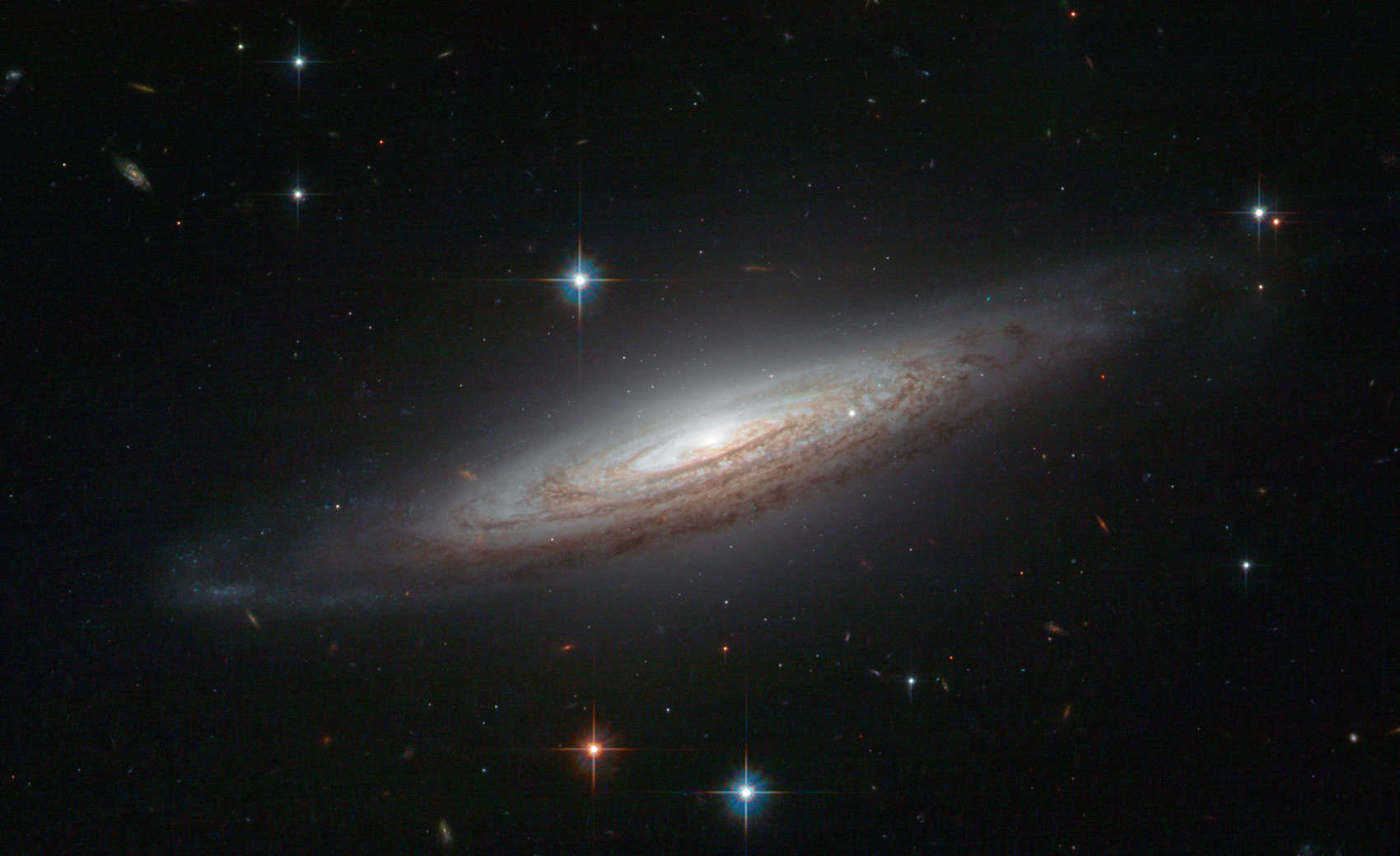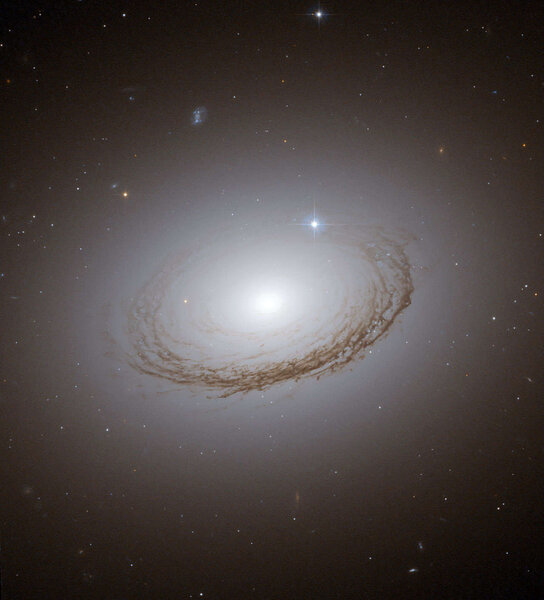Create a free profile to get unlimited access to exclusive videos, sweepstakes, and more!
The dusty depths of a spectacular spiral galaxy

In something I'm considering making a tradition here at BA Central, here is your Monday morning jaw-dropping spiral galaxy: NGC 634 as seen by Hubble:
Isn't that something? This galaxy is a gorgeous nearly edge-on spiral, about 120,000 light years across or so -- slightly bigger than the Milky Way -- and 220 million light years away. The press release (at the link above) for this spiral talks about a supernova that blew up in this galaxy back in 2008, and I was going to write about that, but then something else tickled my brain.
Look at the picture. The disk of the galaxy, like in most spirals, is ribboned with dark dust lanes, huge clouds of complex organic molecules expelled by stars being born and stars dying. It's pretty common to see them, but what struck me is the asymmetry of the lanes: they are darker on the bottom than at the top. The overwhelming impression is that we're looking down on the spiral, so the dust lanes are more obvious on the near side than the far side.
This cannot be a physical effect of having dust only on one side of the galaxy. If it were, then random chance would make it pretty unlikely to have it on the side tipped toward us. Plus, I realized that I've seen this before! For example, in this image here of NGC 7049 (click to embiggen) you see the exact same thing. It's also clear in images of M 64, where the feature is so obvious it gave the object its nickname of the Black Eyed Galaxy.
After mulling it over for a moment, I suddenly realized what it was: each of these galaxies must have an extended halo of stars surrounding the central bulge and disk. If the galaxy were just a disk these features would be very difficult to explain, but if there are a few billion stars that exist above and below the plane of the disk, they would "fill in" the dark lanes, making them less dark. And that explains why we see the dust better on the galaxy's near side: we're not looking through as many stars. It's like we're looking through a fog; stuff nearby is clearer than stuff farther away because we're looking through less mist. Except in this case, the fog isn't obscuring anything. It's stars, adding their light to the overall picture.
That's pretty cool, and something I never thought of before. I don't expect this to be a very common feature of spirals, since most angled or nearly edge-on galaxies don't show this effect very strongly. That might make an interesting project for an undergrad. You could take a sample of a few hundred spirals at various tilts and then compare the brightness of the dust lanes on one side versus the other. You should be able to get a census of the stars in the halo as well. Having spectra would help too.
I'm not soliciting research here; for me a grant is when I go to the ATM. But if you're an undergrad in astronomy, ask your professor. Maybe this has been done already... and if so, I'd be interested in reading about it! It's a lot of fun to get a flash of insight on something, and even better to find out it's attackable by science.
















